Where Art meets Science to create Beautiful Smile
- TEXT US: 8608798999
- MenuMenuMenuMenu
Where Art meets Science to create Beautiful Smile
Where Art meets Science to create Beautiful Smile
Menu
- MenuMenuMenuMenu
Where Art meets Science to create Beautiful Smile
Where Art meets Science to create Beautiful Smile
WHAT’S THE CORRECT WAY TO BRUSH?
– Place the head of the toothbrush next to your teeth with the bristle tips at a 45-degree angle next to the gum line.
– Move the brush back and forth in a small circular scrubbing motion.
– Brush the outer surfaces of all teeth, upper and lower. Make sure you keep the bristles angled against your gum line.
– Now, brush the inside tooth surfaces using the same brush strokes.
– To reach the inside surfaces of your front teeth, tilt your brush vertically and use gentle, up, and down strokes with the head of the brush.
– Scrub the chewing surfaces of all back teeth.
Toothpaste is a vital part of your daily oral hygiene routine. Along with your toothbrush and floss, it helps remove food debris and plaque from your teeth and gums.
We know and love our toothbrushes as the tools that kick plaque to the curb, help keep cavities at bay (with the help of fluoride toothpaste, of course) and freshen our breath. But what else can we learn about them? Read on for some toothbrush facts.
– When selecting your toothbrush, look for the ADA Seal. The ADA Seal of Acceptance is the gold standard for toothbrush quality. Its how you’ll know an independent body of scientific experts, the ADA Council on Scientific Affairs, evaluated your toothbrush to make sure bristles won’t fall out with regular use, the handle will stay strong. The toothbrush will help reduce your risk for cavities and gum disease.
– The toothbrush is 5,000 years old.
In various forms, that is. Ancient civilizations used a “chew stick,” a thin twig with a frayed end, to remove food from their teeth. Over time, toothbrushes evolved and were made from bone, wood, ivory handles, and stiff bristles of hogs, boars, or other animals. The modern nylon-bristled toothbrush we use today was invented in 1938.
– The first mass-produced toothbrush was invented in prison. In 1770, an Englishman named William Addis was jailed for inciting a riot. He saw fellow prisoners using a rag covered in soot or salt to clean their teeth. Addis saved an animal bone from dinner and received bristles from a guard. Accounts state he bored tiny holes into the bone, inserted the bristles, and sealed them with glue. After his release, he modified his prototype, started a company, and manufactured his toothbrush. That company, Wisdom Toothbrushes, still exists in the United Kingdom today.
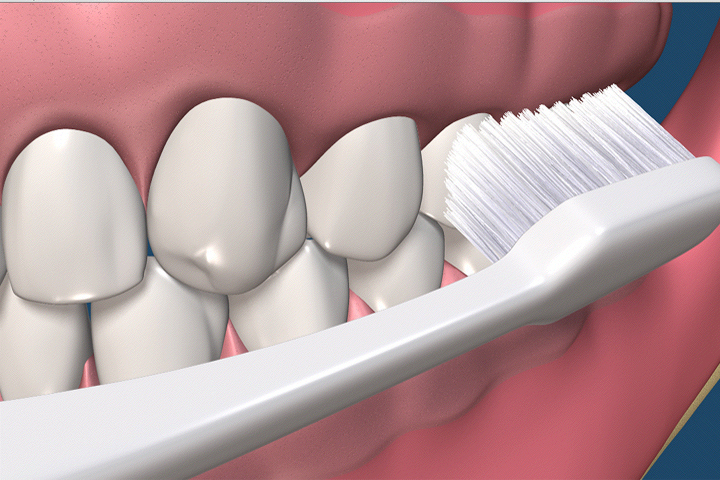
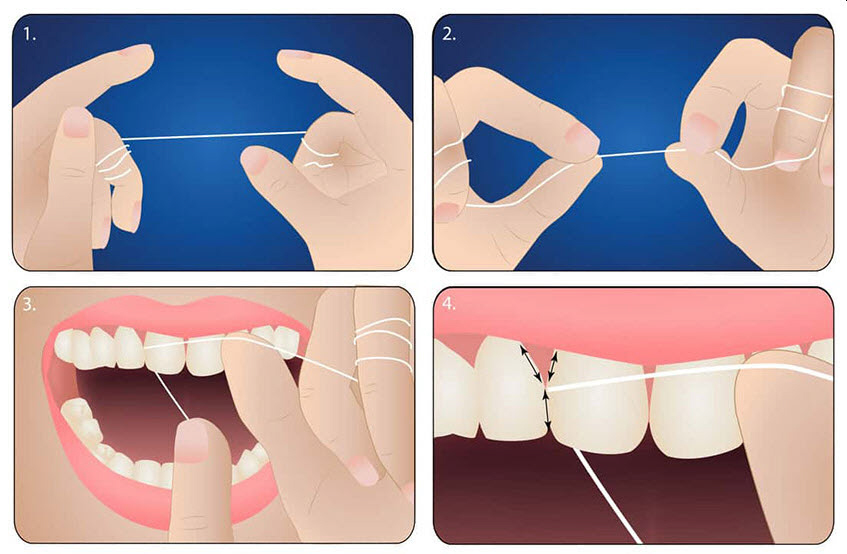
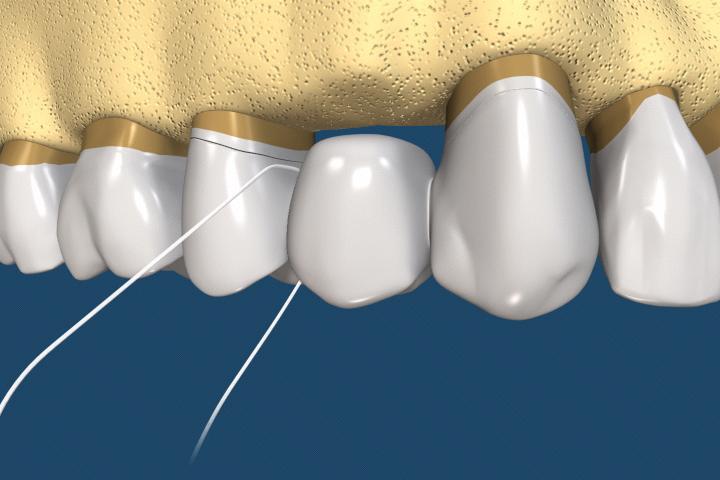
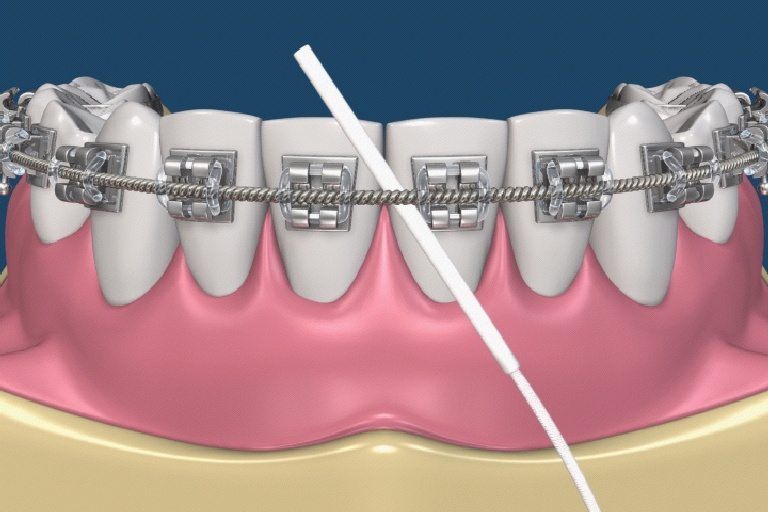
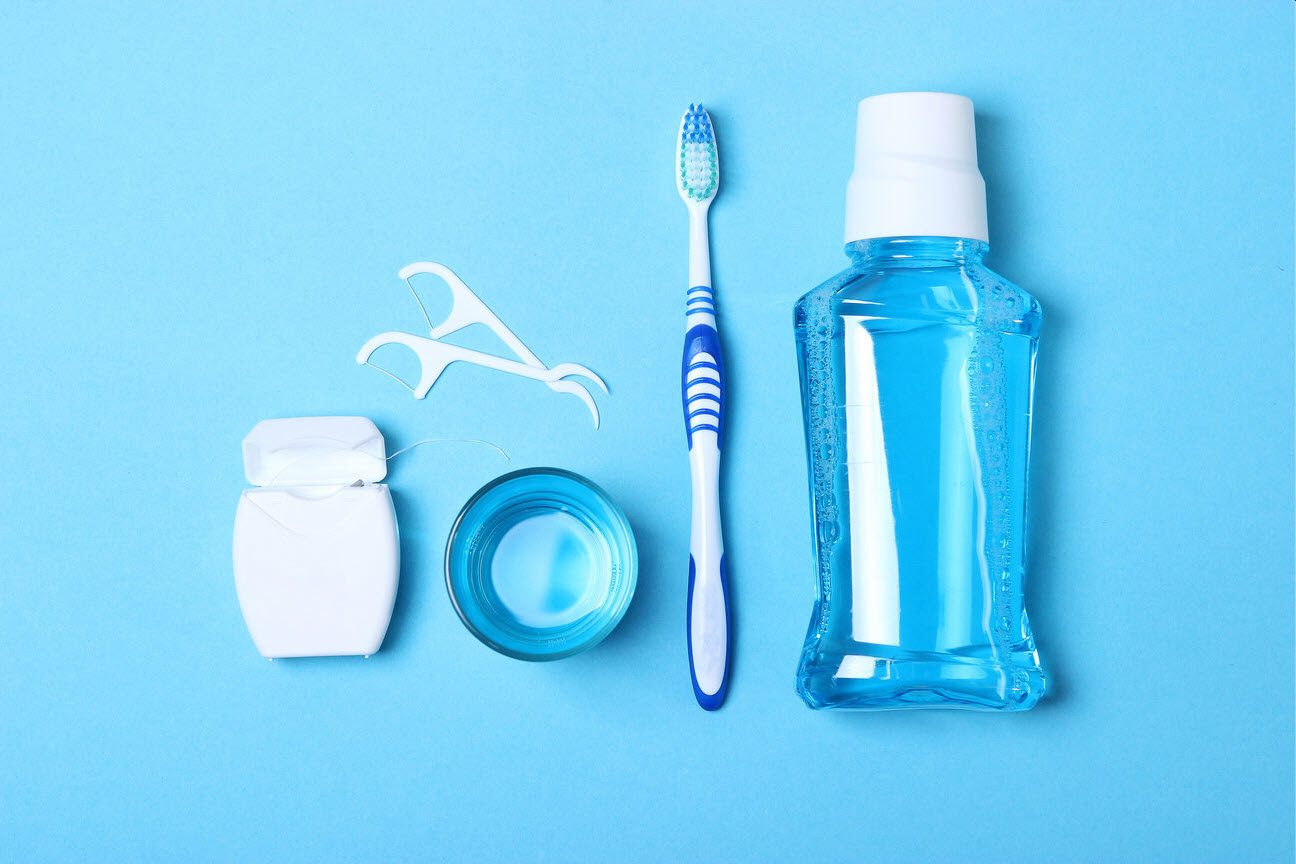

WHAT’S THE CORRECT WAY TO BRUSH?
– Place the head of the toothbrush next to your teeth with the bristle tips at a 45-degree angle next to the gum line.
– Move the brush back and forth in a small circular scrubbing motion.
– Brush the outer surfaces of all teeth, upper and lower. Make sure you keep the bristles angled against your gum line.
– Now, brush the inside tooth surfaces using the same brush strokes.
– To reach the inside surfaces of your front teeth, tilt your brush vertically and use gentle, up, and down strokes with the head of the brush.
– Scrub the chewing surfaces of all back teeth.
Toothpaste is a vital part of your daily oral hygiene routine. Along with your toothbrush and floss, it helps remove food debris and plaque from your teeth and gums.
We know and love our toothbrushes as the tools that kick plaque to the curb, help keep cavities at bay (with the help of fluoride toothpaste, of course) and freshen our breath. But what else can we learn about them? Read on for some toothbrush facts.
– When selecting your toothbrush, look for the ADA Seal. The ADA Seal of Acceptance is the gold standard for toothbrush quality. Its how you’ll know an independent body of scientific experts, the ADA Council on Scientific Affairs, evaluated your toothbrush to make sure bristles won’t fall out with regular use, the handle will stay strong. The toothbrush will help reduce your risk for cavities and gum disease.
– The toothbrush is 5,000 years old. In various forms, that is. Ancient civilizations used a “chew stick,” a thin twig with a frayed end, to remove food from their teeth. Over time, toothbrushes evolved and were made from bone, wood, ivory handles, and stiff bristles of hogs, boars, or other animals. The modern nylon-bristled toothbrush we use today was invented in 1938.
– The first mass-produced toothbrush was invented in prison. In 1770, an Englishman named William Addis was jailed for inciting a riot. He saw fellow prisoners using a rag covered in soot or salt to clean their teeth. Addis saved an animal bone from dinner and received bristles from a guard. Accounts state he bored tiny holes into the bone, inserted the bristles, and sealed them with glue. After his release, he modified his prototype, started a company, and manufactured his toothbrush. That company, Wisdom Toothbrushes, still exists in the United Kingdom today.
– Manual or powered? Your teeth don’t care. In the manual and powered toothbrush debate, it’s a wash. You need to brush twice a day for two minutes with fluoride toothpaste. (If your toothpaste has the ADA Seal, you’ll know it has fluoride.) Both types of toothbrushes can effectively and thoroughly clean your teeth. It all depends on which one you prefer. People who find it challenging to use a manual toothbrush may find a powered toothbrush more comfortable. Talk to your dentist about which kind is best for you.

– There is no “correct” order for brushing and flossing teeth. Brushing before flossing, flossing before brushing—it doesn’t matter to your teeth, as long as you do both.
– Toothbrushes like to be left out in the open. Cleaning your toothbrush is easy: Rinse it with tap water to remove any remaining toothpaste and debris. Store it upright and allow it to air dry. If you store your toothbrush with other toothbrushes, make sure they are separated to prevent cross-contamination. And do not routinely cover toothbrushes or store them in closed containers. A moist environment such as a closed container is more conducive to the growth of unwanted bacteria than the open air.
– Lifespan = 3-4 Months Make sure to replace your toothbrush every three to four months, or sooner if the bristles are frayed. A worn toothbrush won’t do as good a job cleaning your teeth.
– When it comes to choosing a brush, go soft. Whether you use a manual or powered toothbrush, choose a soft-bristled brush. Firm or even medium-strength bristles may cause damage to your gums and enamel. When brushing your teeth, don’t scrub vigorously—only brush hard enough to clean the film off your teeth. Your fluoride toothpaste will do the rest of the work.
– Remember 2 minutes, two times a day. Four minutes a day goes a long way for your dental health. Put the time in each day to keep your smile healthy and keep up this twice-a-day habit.
– Sharing is caring, but not for toothbrushes. Sharing a toothbrush can mean you’re also sharing germs and bacteria. This could be a particular concern if you have a cold or flu to spread or a condition that leaves your immune system compromised.
Toothpaste can come in a gel, paste, or powder form. While the ingredients differ slightly, all toothpaste contain the same general components:
– Mild abrasive. With some help from your toothbrush, these help remove debris and surface stains.
– Humectants. This ingredient helps prevent water loss and keeps your toothpaste from drying out or getting gummy.
– Flavoring agents. This is what gives your toothpaste a little bit of sweetness and that minty fresh scent. Since these do not contain sugar, they do not promote tooth decay.
– Thickening agents. Also known as binders, these help to stabilize the toothpaste formula.
– Detergent. That foaming action comes from detergent, and it also helps to spread the toothpaste through your whole mouth and helps clean teeth.
They may have the same basic ingredients, but all toothpaste is not the same. Other ingredients can also be added for other benefits depending on the toothpaste. Here are some essential things to keep in mind when choosing your toothpaste:
– Decay prevention. Fluoride is a natural cavity fighter that helps to strengthen tooth enamel and fight tooth decay. Not all toothpaste contains fluoride. Be sure always to use a toothpaste containing this cavity-fighting mineral.
– Plaque and gingivitis. Several kinds of toothpaste contain active ingredients to fight plaque and gingivitis, an early form of gum disease.
– Whitening. If you’re looking for a little extra sparkle in your smile, “whitening” toothpaste has special chemical or polishing agents that help remove more surface stains than regular toothpaste.
– Desensitizing. If you have sensitive teeth, you may consider desensitizing toothpaste. These contain compounds that help to reduce tooth sensitivity.
Finally, always look for the ADA Seal when selecting toothpaste. The Seal helps you make sure you are choosing the best toothpaste for your dental needs. It’s also your assurance that the toothpaste has met the ADA criteria for safety and effectiveness and that it does what it says. Visit the ADA website for more information about the ADA Seal of Acceptance and toothpaste.

HOW DO I REMOVE PLAQUE BY FLOSSING?
– Plaque is a bacteria-laden white substance, which forms on the teeth and contributes to tooth decay, gum disease, and bad breath.
– Effective oral b flossing will help remove the plaque missed by brushing before contributing to these harmful effects. Here’s how to floss:
– Use a piece of dental floss approximately 18 inches long. Wind each end of the floss around your middle fingers.
– Holding the floss tightly between your thumbs and forefingers, leave about an inch of floss. Use a gentle, back and forth motion to guide the floss in between your teeth. Avoid snapping the floss, which may cause unnecessary irritation to the gums.
– When the floss is at the gum line, curve it into an arc around each tooth until there is mild resistance.
– Hold the floss in the arc position and gently slide it up the side of the tooth, making sure the floss goes under the gum. Move the floss up and down (not back and forth) several times to remove the plaque from under the gum.
– Repeat this procedure on both sides of each tooth.

HOW DO I MAINTAIN DENTAL HEALTH BETWEEN VISITS?
– A beautiful smile is up to you!
– In addition to regular oral hygiene visits, it’s essential that you eat a balanced diet and make sure to floss and brush every day.
– During your appointment, we’ll be happy to show you the type of toothbrush that’s best for you. Typically, it would be best to choose a toothbrush with soft nylon bristles that are smooth and rounded.
– Toothbrushes should be replaced when the bristles begin to lose their shape.
– If you find flossing difficult you can now buy a flossing toothbrush, to maintain a healthy smile.
MOUTHWASH
While not a replacement for daily brushing and flossing, use of mouthwash (also called mouthrinse) may be a helpful addition to the daily dental hygiene routine for some people.
Why Use Natural Mouthwash?
Just like dental floss, interdental brushes, and water flosses, some best mouthwash can get in between teeth. Reaching areas where your toothbrush can’t get to help reduce the risk of cavities and gum disease. Mouthwash can help:
– Prevent or control tooth decay
– Reduce plaque (a thin film of bacteria that forms on teeth)
– Prevent or reduce gingivitis (an early stage of gum disease)
– Reduce the speed that tartar (hardened plaque) forms on the teeth or produce a combination of these effects
– Freshen breath

Types of Mouthwash
There are two main types of mouthwashes:
– Therapeutic fluoride mouthwashes. These have active ingredients that kill bacteria and help reduce plaque, gingivitis, cavities, and bad breath. Those that contain fluoride help prevent or reduce tooth decay.
– Cosmetic mouthwashes. These may temporarily control or reduce bad breath and leave your mouth with a pleasant taste, but don’t reduce your risk of cavities or gum disease.
Some therapeutic mouthwashes require a prescription, but many types of mouthwashes are available over-the-counter. Talk to your dentist about whether you need a mouthwash and what kind of mouthwash to use, depending on your dental health needs.
When selecting an over-the-counter mouthwash, look for products that carry the American Dental Association Seal of Acceptance, which means that they have been tested and shown to be safe and effective.
Mouthwash and Children
Mouthwash for kids is not recommended for children younger than six years of age. They may accidentally swallow large amounts of mouthwash, which can cause nausea, vomiting, and intoxication (due to the alcohol content in some rinses). Check the label and follow specific precautions, instructions, and age recommendations.
– Manual or powered? Your teeth don’t care. In the manual and powered toothbrush debate, it’s a wash. You need to brush twice a day for two minutes with fluoride toothpaste. (If your toothpaste has the ADA Seal, you’ll know it has fluoride.) Both types of toothbrushes can effectively and thoroughly clean your teeth. It all depends on which one you prefer. People who find it challenging to use a manual toothbrush may find a powered toothbrush more comfortable. Talk to your dentist about which kind is best for you.
– There is no “correct” order for brushing and flossing teeth. Brushing before flossing, flossing before brushing—it doesn’t matter to your teeth, as long as you do both.
– Toothbrushes like to be left out in the open. Cleaning your toothbrush is easy: Rinse it with tap water to remove any remaining toothpaste and debris. Store it upright and allow it to air dry. If you store your toothbrush with other toothbrushes, make sure they are separated to prevent cross-contamination. And do not routinely cover toothbrushes or store them in closed containers. A moist environment such as a closed container is more conducive to the growth of unwanted bacteria than the open air.
– Lifespan = 3-4 Months Make sure to replace your toothbrush every three to four months, or sooner if the bristles are frayed. A worn toothbrush won’t do as good a job cleaning your teeth.
– When it comes to choosing a brush, go soft. Whether you use a manual or powered toothbrush, choose a soft-bristled brush. Firm or even medium-strength bristles may cause damage to your gums and enamel. When brushing your teeth, don’t scrub vigorously—only brush hard enough to clean the film off your teeth. Your fluoride toothpaste will do the rest of the work.
– Remember 2 minutes, two times a day. Four minutes a day goes a long way for your dental health. Put the time in each day to keep your smile healthy and keep up this twice-a-day habit.
– Sharing is caring, but not for toothbrushes. Sharing a toothbrush can mean you’re also sharing germs and bacteria. This could be a particular concern if you have a cold or flu to spread or a condition that leaves your immune system compromised.
Toothpaste can come in a gel, paste, or powder form. While the ingredients differ slightly, all toothpaste contain the same general components:
– Mild abrasive. With some help from your toothbrush, these help remove debris and surface stains.
– Humectants. This ingredient helps prevent water loss and keeps your toothpaste from drying out or getting gummy.
– Flavoring agents. This is what gives your toothpaste a little bit of sweetness and that minty fresh scent. Since these do not contain sugar, they do not promote tooth decay.
– Thickening agents. Also known as binders, these help to stabilize the toothpaste formula.
– Detergent. That foaming action comes from detergent, and it also helps to spread the toothpaste through your whole mouth and helps clean teeth.
They may have the same basic ingredients, but all toothpaste is not the same. Other ingredients can also be added for other benefits depending on the toothpaste. Here are some essential things to keep in mind when choosing your toothpaste:
– Decay prevention. Fluoride is a natural cavity fighter that helps to strengthen tooth enamel and fight tooth decay. Not all toothpaste contains fluoride. Be sure always to use a toothpaste containing this cavity-fighting mineral.
– Plaque and gingivitis. Several kinds of toothpaste contain active ingredients to fight plaque and gingivitis, an early form of gum disease.
– Whitening. If you’re looking for a little extra sparkle in your smile, “whitening” toothpaste has special chemical or polishing agents that help remove more surface stains than regular toothpaste.
– Desensitizing. If you have sensitive teeth, you may consider desensitizing toothpaste. These contain compounds that help to reduce tooth sensitivity.
Finally, always look for the ADA Seal when selecting toothpaste. The Seal helps you make sure you are choosing the best toothpaste for your dental needs. It’s also your assurance that the toothpaste has met the ADA criteria for safety and effectiveness and that it does what it says. Visit the ADA website for more information about the ADA Seal of Acceptance and toothpaste.
HOW DO I REMOVE PLAQUE BY FLOSSING?
– Plaque is a bacteria-laden white substance, which forms on the teeth and contributes to tooth decay, gum disease, and bad breath.
– Effective oral b flossing will help remove the plaque missed by brushing before contributing to these harmful effects. Here’s how to floss:
– Use a piece of dental floss approximately 18 inches long. Wind each end of the floss around your middle fingers.
– Holding the floss tightly between your thumbs and forefingers, leave about an inch of floss. Use a gentle, back and forth motion to guide the floss in between your teeth. Avoid snapping the floss, which may cause unnecessary irritation to the gums.
– When the floss is at the gum line, curve it into an arc around each tooth until there is mild resistance.
– Hold the floss in the arc position and gently slide it up the side of the tooth, making sure the floss goes under the gum. Move the floss up and down (not back and forth) several times to remove the plaque from under the gum.
– Repeat this procedure on both sides of each tooth.
HOW DO I MAINTAIN DENTAL HEALTH BETWEEN VISITS?
– A beautiful smile is up to you!
– In addition to regular oral hygiene visits, it’s essential that you eat a balanced diet and make sure to floss and brush every day.
– During your appointment, we’ll be happy to show you the type of toothbrush that’s best for you. Typically, it would be best to choose a toothbrush with soft nylon bristles that are smooth and rounded.
– Toothbrushes should be replaced when the bristles begin to lose their shape.
– If you find flossing difficult you can now buy a flossing toothbrush, to maintain a healthy smile.
MOUTHWASH
While not a replacement for daily brushing and flossing, use of mouthwash (also called mouthrinse) may be a helpful addition to the daily dental hygiene routine for some people.
Why Use Natural Mouthwash?
Just like dental floss, interdental brushes, and water flosses, some best mouthwash can get in between teeth. Reaching areas where your toothbrush can’t get to help reduce the risk of cavities and gum disease. Mouthwash can help:
– Prevent or control tooth decay
– Reduce plaque (a thin film of bacteria that forms on teeth)
– Prevent or reduce gingivitis (an early stage of gum disease)
– Reduce the speed that tartar (hardened plaque) forms on the teeth or produce a combination of these effects
– Freshen breath
Types of Mouthwash
There are two main types of mouthwashes:
– Therapeutic fluoride mouthwashes. These have active ingredients that kill bacteria and help reduce plaque, gingivitis, cavities, and bad breath. Those that contain fluoride help prevent or reduce tooth decay.
– Cosmetic mouthwashes. These may temporarily control or reduce bad breath and leave your mouth with a pleasant taste, but don’t reduce your risk of cavities or gum disease.
Some therapeutic mouthwashes require a prescription, but many types of mouthwashes are available over-the-counter. Talk to your dentist about whether you need a mouthwash and what kind of mouthwash to use, depending on your dental health needs.
When selecting an over-the-counter mouthwash, look for products that carry the American Dental Association Seal of Acceptance, which means that they have been tested and shown to be safe and effective.
Mouthwash and Children
Mouthwash for kids is not recommended for children younger than six years of age. They may accidentally swallow large amounts of mouthwash, which can cause nausea, vomiting, and intoxication (due to the alcohol content in some rinses). Check the label and follow specific precautions, instructions, and age recommendations.
MONDAY 9 AM – 5.30 PM
TUESDAY 9 AM – 5.30 PM
WEDNESDAY 9 AM – 5.30 PM
THURSDAY 10.30 AM – 6.30 PM
FRIDAY 9 AM – 3.30 PM
SATURDAY CLOSED
SUNDAY CLOSED
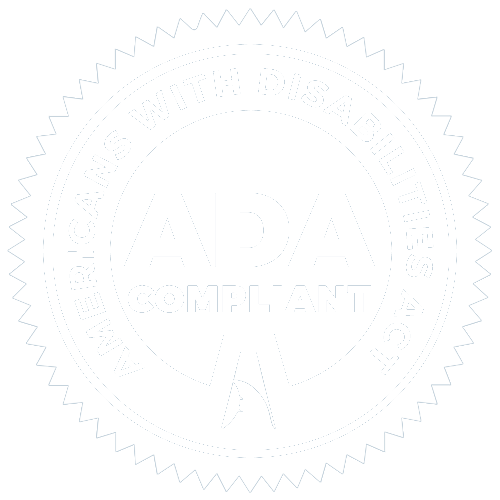
MONDAY 9 AM – 5.30 PM
TUESDAY 9 AM – 5.30 PM
WEDNESDAY 9 AM – 5.30 PM
THURSDAY 10.30 AM – 7 PM
FRIDAY 9 AM – 5.30 PM
SATURDAY CLOSED
SUNDAY CLOSED

MONDAY 9 AM – 5.30 PM
TUESDAY 9 AM – 5.30 PM
WEDNESDAY 9 AM – 5.30 PM
THURSDAY 10.30 AM – 7 PM
FRIDAY 9 AM – 5.30 PM
SATURDAY CLOSED
SUNDAY CLOSED
